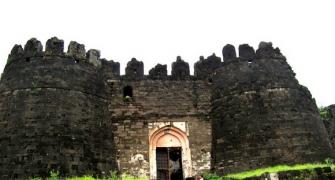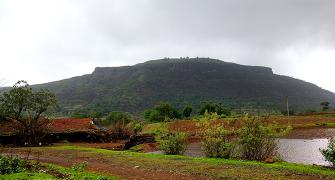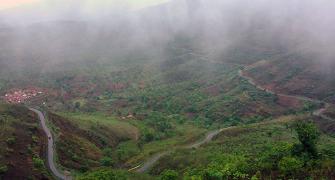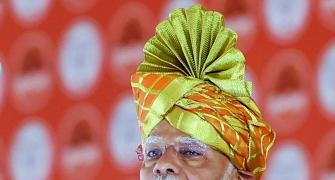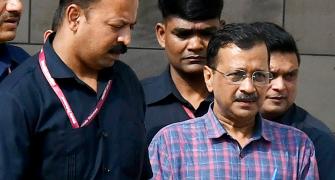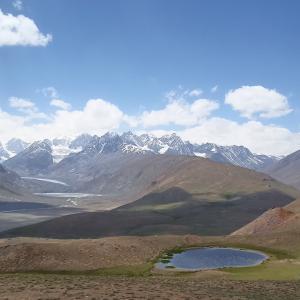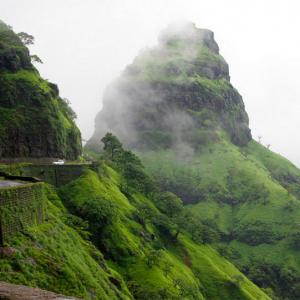Among Chhatrapati Shivaji Maharaj's legacy are the 58 marvelous forts that he built or fortified during his illustrious reign when his empire was a major naval power.
Maharashtra, to this day, has many imposing forts that are remarkably well preserved and hold history behind their walls. They proudly stand as a reminder of the Maratha soldier's rich legacy.
India has collectively nominated this network of forts that showcases the military power of the Maratha empire, as Maratha Military Landscapes, for inclusion in the UNESCO World Heritage list for 2024-2025.
The 12 amazing fortresses, who figure in this nomination, are the forts of Salher, Shivneri, Lohagad, Khanderi, Raigad, Rajgad, Pratapgad, Suvarnadurg, Panhala, Vijaydurg and Sindhudurg in Maharashtra and Gingee Fort in Tamil Nadu.

Shivneri Fort
Located near Junnar town in Pune district, Shivneri Fort holds immense significance in the history of the Maratha Empire as it was the birthplace of Chhatrapati Shivaji Maharaj. He spent his formative years in the hill fortress and it is believed to where he learnt the art of warfare and politics.
Today, Shivneri Fort is a place for interest for historywallahs and trekking enthusiasts, who come to explore the fort's historic ruins and picturesque surroundings.
How to reach: About 5 km from Junnar town, which is at a distance of 94 km from Pune city.

Salher Fort
Situated at the height of 5,175 feet near the border of Maharashtra and Gujarat in the Baglan region of Nashik district, Salher is the highest fort in Maharashtra and that makes it the second highest peak in the Sahayadri range after Kalsubai (in Ahmednagar).
This historic fort is famously known for the Battle of Salher, which was fought between the Marathas and the Mughals in 1672. Known as one of the bloodiest and important battles in Indian medieval history, the result was a critical victory for the Marathas.
The trek to Salher fort is challenging as it requires you to master rock-cut steps during the ascent and descent, but the mesmerising views from the top are worth the effort. The top-most point of the fort has a temple dedicated to Lord Parshuram and offers panoramic views of the surrounding region.
How to reach: The fort is located 280 km from Mumbai and 110 km from Nashik. The nearest railway station is Manmad 81 km away.

Raigad Fort
Raigad district is home to a fort that was the capital of the Maratha empire and served as another stronghold of Chhatrapati Shivaji Maharaj. It was also the site of Maharaj's coronation.
This magnificent hill fortress lies 100 km from Mumbai and 135 km away from Pune.
How to reach: Mangaon, 142 km from Mumbai, is the nearest major railway station on the Konkan Railway, about 40 km away from the fort.

Rajgad Fort
Rajgad Fort is one of the most impressive forts in the Sahyadri mountain range. The hill fortress was Chhatrapati Shivaji Maharaj's capital for over 25 years before he moved the capital to the Raigad Fort.
The highest part of the fort has remnants of palaces, water cisterns and caves.
How to reach: The fort is located 60 km from Pune, and about 16 km from Nasrapur town.

Lohgad Fort
Lohagad is among the strongest Deccan forts near the Bhaje caves. The name Lohagad arrived from two Marathi words -- Loha meaning iron and Gad meaning fort.
Chhatrapati Shivaji Maharaj captured it in 1648, but he was forced to surrender it to the Mughals in 1665 by the Treaty of Purandar. In 1670, Maharaj reclaimed the fort and used it for treasury purposes.
How to reach: The 5 km trek starts from Lohgadwadi which is easily accessible from Lonavala at 25 km.

Khanderi Fort
A solid specimen of the Maratha Empire's maritime legacy, Khanderi Fort was a citadel of the Maratha navy to combat the Siddhis of Janjira.
The twin fort Khanderi and Undheri were constructed on two islands about 320 years ago and were administrated by Chhatrapati Shivaji Maharaj's admiral Kanhoji Angre.
At a pretty spot in Alibag, the fort is on a small island 3 km away from the Thal coast. It is currently supervised by the Port Trust administration and tourists can visit the fort after obtaining permission from the Bombay Port Trust.
How to reach: Take a boat from Thal Bazar, which is about 10 km from Alibaug.

Pratapgad Fort
Pratapgad or the Fort of Valour is easily the most recognised of forts near Mahabaleshwar in Satara district. It is another awe-inspiring structure built by Chhatrapati Shivaji Maharaj.
This fort was the site of the Battle of Pratapgad, which was fought in 1659 between Shivaji Maharaj and Afzal Khan, a general of the Adil Shahi kings.
Scores of tourists journey here to see the four lakes, a watchtower, two temples, and a statue of the Maratha ruler situated on top of the fort.
How to reach: The fort is located about 20 km from the popular hill station of Mahabaleshwar.

Suvarnadurg Fort
One of the most prominent sea forts in the Konkan region, near Harne, Suvarnadurg or the Golden Fort has its ramparts on a small island in the Arabian Sea.
The fort was built by the Bijapur kings and later conquered by Chhatrapati Shivaji Maharaj who found it strategically useful as a location for his navy.
As it is built on an island, you can only visit the fort via boat. Ferry and boat services can be found at Harne harbour.
How to reach: To reach the fort, one has to take a boat from Harne village.

Panhala Fort
The pride of Panhala town in Kolhapur district , Panhala or Panhalgad, the medieval fortress, is also called the Fort of Snakes because of its odd shape.
As one of the largest forts in the Deccan, this Maratha bastion was constructed near a major trade route that ran from Bijapur to the Arabian Sea. This was the battleground for several wars in Maratha history, including the Battle of Pawan Khind, that resulted in a defeat for the Marathas.
Panhala was the capital of the Maratha state between 1782 and 1827 until it became part of the British Empire.
How to reach: Kolhapur is the nearest railway station, about 20 km away.

Vijaydurg Fort
On the lovely Sindhudurg coast, near, Devgad Taluk, Vijaydurg -- whose name translates to Victory Fort -- is among the most well-known coastal forts in Maharashtra.
The British called it Eastern Gibraltar because of its ideal location and sheer strength which made it extremely difficult for invaders to attack. The Marathas used Vijaydurg to anchor Maratha warships.
Legend has it that Vijaydurg is one of only two forts where Chhatrapati Shivaji Maharaj personally hoisted the saffron flag, besides the Torna Fort (in Pune district).
How to reach: The nearest major railway station to Vijaydurg is Kankavli on the Konkan Railway at 76 km. One can take a bus or rickshaw to the Vijaydurg ferry point from Kankavli town. Kankavli is located 480 km from Mumbai.

Sindhudurg Fort
Its home is a small island known as Kurte in Sindhudurg district, just off the sparkling coast of Malvan. The inspiring sea fort was built by Chhatrapati Shivaji Maharaj in the 17th century.
Spread over 48 acres, Sindhudurg (meaning the Fort of the Sea) is notable for the strength of its design which took three years to complete. The fort has a temple dedicated to Shivaji Maharaj, which houses his handprints and footprints.
It is believed that the passage that starts from one of the temples goes under the fort beneath the sea and opens up to the nearby village around 12 km away, but that has not been confirmed.
How to reach: Kudal is the nearest railway station to Sindhudurg fort at a distance of 34 km. Ferries are easily available from the Sindhudurg fort jetty.

Gingee Fort
Perched on a hilltop, Gingee Fort, also called as Senji, is of considerable historical and architectural importance in southern India. The fort stood tall through centuries of battles -- from the Mughals to the British. A small portion was under the control of Chhatrapati Shivaji Maharaj in the 16th century.
The fort was called the Troy of the East by the British because of its invincible status. The fort also weathered the longest siege by the Mughal army which lasted for eight long years.
History buffs, travelers, and trekkers love to take in the grandeur of this ancient fort.
How to reach The nearest railway station to Gingee Fort, 40 km away is the Villupuram railway station, which is 142 km from Chennai. One can take a taxi from the station to reach to Gingee Fort.


